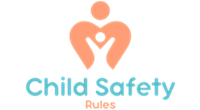As a parent, one of the most important things you can do to keep your child safe is childproofing your home. From sharp corners to toxic substances, there are many potential hazards in a typical household that can pose a risk to young children. By taking the time to identify and address these dangers, you can create a safer environment for your little one to explore and play in.
Here are some essential safety tips for childproofing your home:
1. Secure furniture: Heavy furniture such as bookshelves, dressers, and televisions can be top-heavy and pose a tipping hazard to children. Make sure to secure these items to the wall using anchors or straps to prevent them from falling over.
2. Cover electrical outlets: Young children are curious by nature and may try to stick objects into electrical outlets. Use outlet covers or caps to prevent them from accessing these potentially dangerous sockets.
3. Install safety gates: Stairs can be a major hazard for young children who are just learning to walk and climb. Install safety gates at the top and bottom of stairs to prevent your child from falling down them.
4. Lock up poisons and medications: Household cleaners, chemicals, and medications should be stored out of reach of children in locked cabinets or drawers. Be sure to also keep the number for poison control handy in case of an emergency.
5. Babyproof cabinets and drawers: Install safety latches on cabinets and drawers to keep little ones from accessing sharp objects, breakable items, or other potentially dangerous items.
6. Eliminate choking hazards: Keep small objects like coins, buttons, and small toys out of reach of children. Also be mindful of foods that can pose a choking hazard, such as grapes, hot dogs, and nuts.
7. Use window guards: Windows pose a falling hazard for young children. Install window guards or stops to prevent your child from opening the window and potentially falling out.
8. Check for blind cord safety: Blind cords can pose a strangulation risk to young children. Make sure to keep them out of reach and consider using cordless blinds or cord wind-ups to eliminate this hazard.
9. Keep doors locked: Secure doors leading to dangerous areas like the garage or outside to prevent your child from wandering into unsafe areas.
10. Be mindful of water safety: Always supervise your child around water, whether it’s in the bath, pool, or even a bucket. Consider installing locks on toilet lids and using door alarms to alert you if a child enters a pool area unattended.
Childproofing your home may seem overwhelming at first, but by taking the time to identify and address potential hazards, you can create a safer environment for your child to explore and play in. Remember, it’s always better to be proactive about safety than to wait until an accident happens. By following these essential safety tips, you can help keep your child safe and give yourself peace of mind as a parent.










